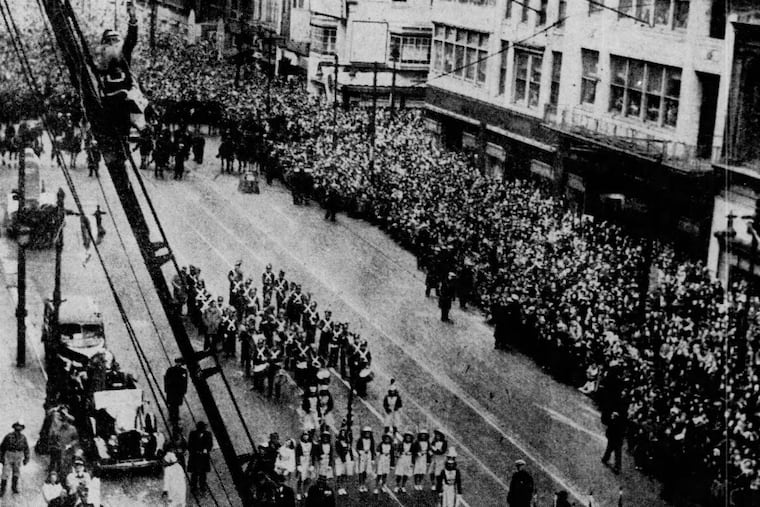Is Philly's Thanksgiving Day parade really the oldest in America?
All week, the city of Philadelphia has proudly boasted that its annual Thanksgiving Day parade is in its 98th year, making it the oldest such event in American history. Or is it?

The annual Thanksgiving Day parade will celebrate its 98th edition Thursday, proudly counted in local advertisements as the oldest such event in American history.
Or is it?
Recent news reports, public relations materials, and Wikipedia entries mark the parade's inception as taking place in Center City on Nov. 25, 1920. Gimbel Brothers gets the nod for the concept.
Searching for details about that historic day in the newspapers.com digital archive, however, wasn't fruitful.
The archive — featuring digital catalogs of local newspapers including the Inquirer, Evening Ledger, and Chester (now Delaware County Daily) Times — does not contain any evidence of a Turkey Day parade taking shape in Philly between 1920 and 1924.
Gimbels Has It! author Michael J. Lisicky explains it this way.
"In 1920, it was a much more low-key event," said Lisicky, who obtained Gimbels corporate documents for his book research. "And it was more almost for the employees, to rouse them up before the Christmas season."
Ellis Gimbel's vision was to marry children's love of Santa Claus with his love of moving merchandise at his store at Eighth and Market Streets. The building would also play a key role in the culmination of the parade: A red-clad fireman would climb a ladder to the store's eighth-floor window and step into the "Toy Palace," signifying the unofficial start of the holiday shopping season.
But for the parade's first iteration, only about 50 people were spread out over 15 cars, according to Gimbels Has It! Santa Claus rode in the last car, which was lavishly decorated with rolls of crepe paper.
"It was a very personal event," Lisicky added. "It wasn't along those grander lines."
In 1924, however, department stores in two other major cities grabbed headlines. The J.L. Hudson Co. in Detroit and R.H. Macy & Co. in New York famously started their own parades, adding circus-like spectacles that attracted large crowds and national attention.
And Gimbels took notice.
As a result, the 1925 archive was ripe with accounts. Gimbels touted the parade and boasted about its superior Santa Claus production, in advertisements splashed across multiple urban and suburban newspapers weeks before the holiday. The ads claimed: "There has never been anything like it."
So there is confirmation that the parades took place. That said, the first rendition and three subsequent episodes were so insignificant and underwhelming, none of them registered on any of the local newspapers' radars.
That leads to an important question: Should they still count?
"There are people who don't necessarily want to accept 1920 as being the first year of the Gimbels parade because it was so modest," Lisicky said. "Philadelphia is America's oldest organized Thanksgiving Day parade. I don't think it's even worth a debate."
The Gimbel family eventually sold its empire, which had ballooned to 36 stores, and by 1986 all locations were slated for closure.
The parade, and its heritage, is all that remains.
"It was a hit from day one," Lee Arnold, Historical Society of Pennsylvania library director, wrote in an email, "and started a string of copycat parades (Are you listening New York City?)."
Search the archives of the Inquirer and Daily News for yourself and subscribe for full access.